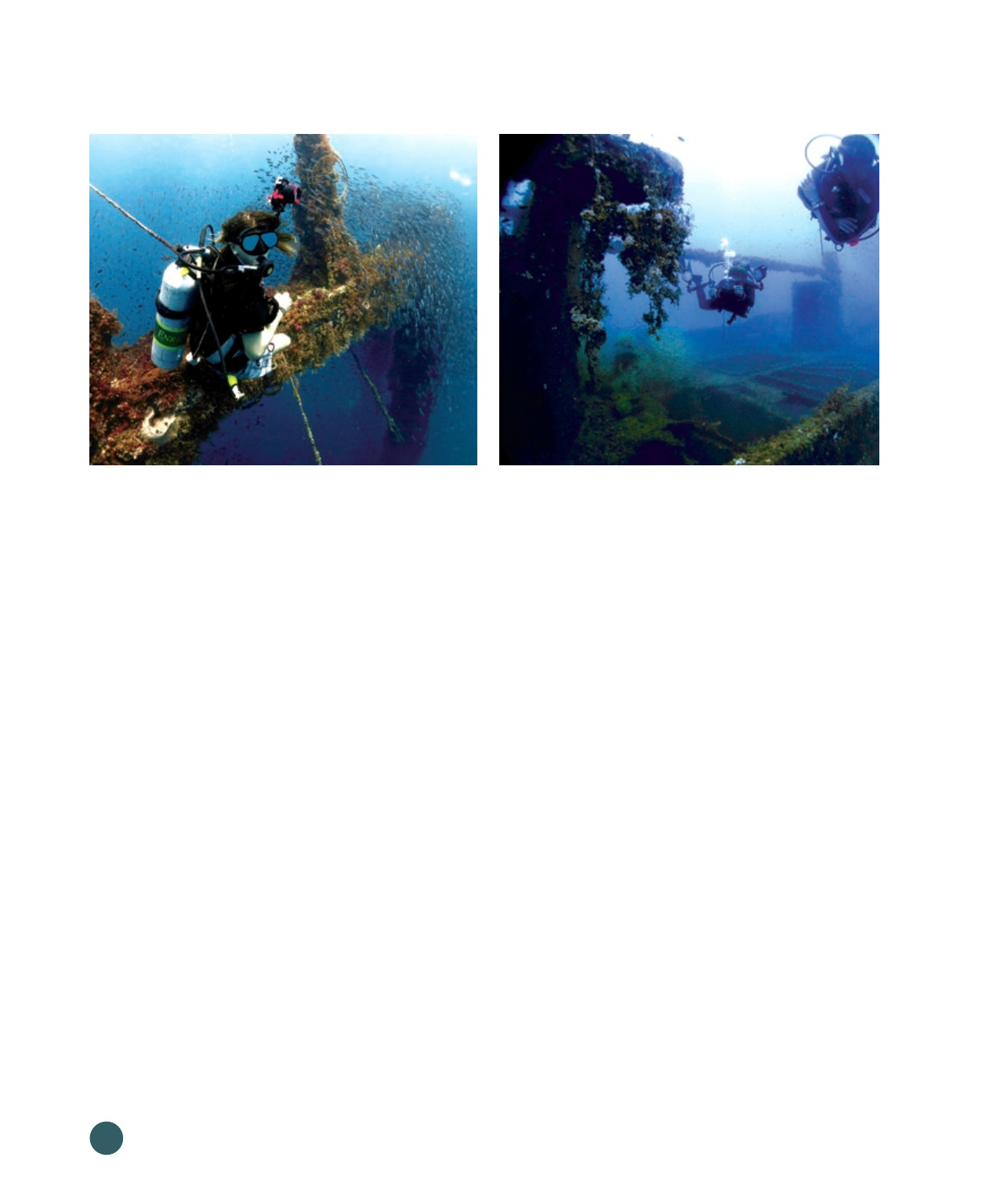

232
Borneo Bulletin Yearbook 2019
Oil Rig Wreck
Another popular diving spot, the Oil Rig Wreck
encompasses fragments of decommissioned oil rig
structures. These structures were sunk by BSP as
part of the Rigs to Reefs program in 1994. Greeting
the divers at the wreck are large schools of chevron
barracudas, jacks and other fish species, as well
as artificial reef at a maximum depth of 18 metres.
This diving site is another popular spot for macro
photography.
Penanjung Wreck
Situated further from most of the regular dive sites
is the Penanjung Wreck, also known as the Yewli
Wreck. It was a tugboat which now lies at a depth
of 24 metres and a high point of 17 metres. Though
it is not often explored by divers due to its slightly
distant location, it plays home to the elusive nurse
sharks and sea snakes, making the trip out worth it.
Petani Mistral
The Petani Mistral was previously a tug ship that
sank in 1995 after it caught one of the legs of the
Trident-12 rig. It now lies at a depth of 47 metres
between the coast of Jerudong and Kuala Belait.
This site is only open to technical divers.
YuhoMaru
Another site open to technical divers, the Yuho
Maru was a Japanese wartime tanker previously
mistaken as one of the Toho Marus that sank during
World War II. The tanker sank in 1944 following an
attack from a torpedo released from an American
submarine. The wreck lies 55 metres undersea.
Southern Glory
One of Brunei’s deepest diving sites at 63 metres,
the Southern Glory was built in New Zealand in
1951 and was formerly called the Karoon. Before it
sank in a storm, the Karoon exchanged ownerships
many times between Malaysian and Singaporean
businesses. Like the Yuho Maru and Petani Mistral,
only technical divers have access to this diving site.
Pelong Rocks
Situated five kilometres away from Muara Beach’s
shores are these tiny outcrop of rocks which are
also referred to as Pulau Pilong-Pilongan. The site
is popular for first-time divers and is often used for
training. However, due to its proximity to the shore,
underwater visibility can be impaired: currents and
surges in the shallowwater can prompt silt and sand
to rise into the waters. Marine life thrives at the site,
with anemones and various clownfish species often
spotted.
Abana Reef
Known for its great variety of untouched soft and
hard corals, the Abana Reef is a large and healthy
reef. The corals are home to a diverse array of
reef residents, including bannerfish, lionfish,
butterflyfish, clownfish, seahorses and pufferfish.
Divers also commonly encounter Gorgonians in
immense quantities as well as seahorses. At an
average depth of 11 metres and temperatures
around 28 degrees, it is a suitable site for beginners.









